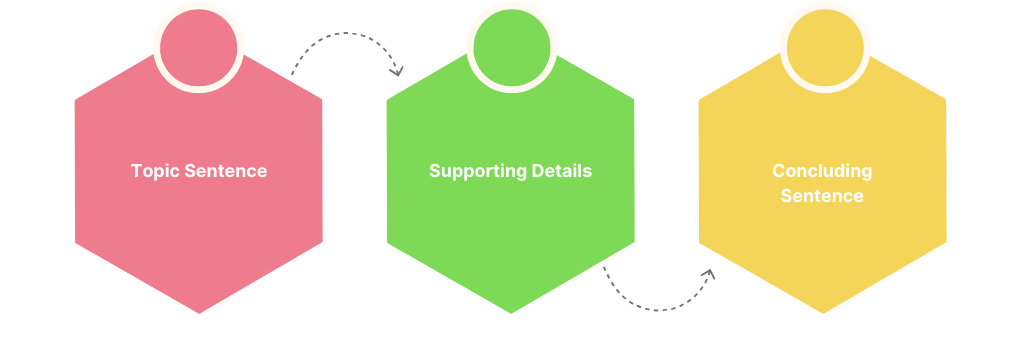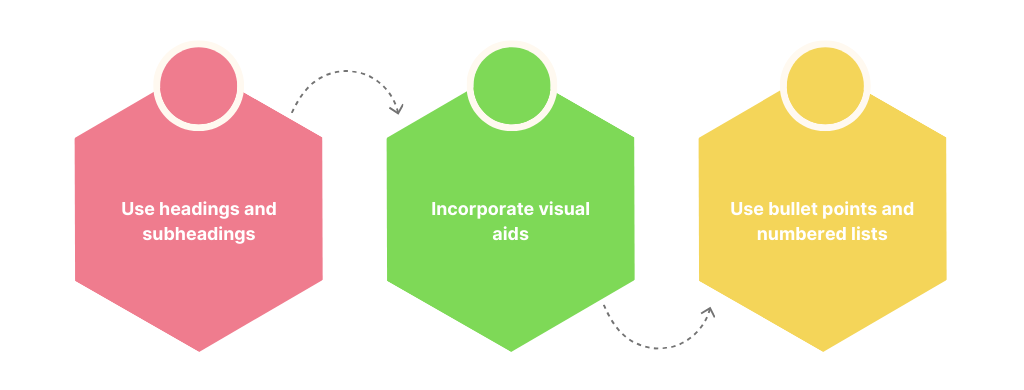
Are you a writer, content maker, digital marketer, student, teacher, or someone else who works with words often? Also, learning how to count paragraphs could completely change how you write. This detailed guide aims to reveal the hidden layers of paragraph organization, showing how important it is for making your writing easier to read, keeping readers interested, and even making your content search engine-friendly.
Table of Contents
ToggleIntroduction
There is no doubt that a paragraph is one of the most essential parts of written language. But good paragraphing is more important than just putting words together; it makes your message clear and powerful. You will learn the basics of counting paragraphs and see how this skill can significantly enhance your writing, rewriting, and the readability of your content.
Understanding Paragraph Structure
Recognizing a well-structured paragraph is critical to effective writing, and this involves identifying its three main components:
Topic Sentence:
This sentence tells you what the piece is about. It sets the mood and clarifies to the reader what the next few lines will be about. A good topic sentence is clear and exciting and grabs the reader’s attention immediately.
Supporting Details:
These details build on the main idea presented in the topic sentence and provide proof to support it. They can consist of facts, cases, quotes, figures, or stories from your own life. To build a strong case or story, the supporting information should be important, useful, and organized in a way that makes sense.
Concluding Sentence:
This sentence summarizes the paragraph’s main idea and effortlessly flows into the next section. It repeatedly reiterates the essential points and ensures the reader knows what the content is all about. A well-written last line also helps the text move, making it easier for the reader to follow along with the author’s ideas.
To write powerful paragraphs, you must find the right balance of essential parts to keep readers interested and get your point across. Each part makes sure that the text flows well and is enjoyable.
How to count paragraphs
There are several methods for counting paragraphs, and the choice ultimately depends on personal preference or specific requirements. Here are three commonly used methods:
Counting Manually:
This method involves scanning the text and physically counting each distinct paragraph. It is a straightforward approach but can be time-consuming, especially for longer writing pieces.
Paragraph Counter Online:
Several websites offer free tools to count paragraphs instantly. These tools are often more accurate than word-processing software as they detect and exclude non-text elements like images or headers.
Microsoft Word: A Quick and Easy Way to Count Paragraphs
If you are using Microsoft Word for your writing, here’s a quick and easy way to count paragraphs:
- Open your document in Microsoft Word.
- Go to the ‘Review’ tab.
- Click on ‘Word Count.’ This opens a dialog box displaying detailed statistics, including the number of paragraphs in your document.
Google Docs: A Useful Tool for Paragraph Counting
If you prefer using Google Docs, here’s how to count paragraphs in your document:
- Open your document in Google Docs.
- Click on ‘Tools’ in the menu.
- Select ‘Word count’. A window will pop up showing the document’s statistics, including paragraphs.
These tools are handy for quick counts, especially when editing or formatting documents.
Programming Techniques
Various programming languages offer methods to count paragraphs for those dealing with digital content programmatically.
Python Example:
Python, with its powerful libraries, can be used to count paragraphs in a text file. Below is a simple script using Python:
“`
With open(‘yourfile.txt’, ‘r’) as file:
Content = file.read()
paragraphs = content.split(‘\n\n’)
print(f”Number of paragraphs: {len(paragraphs)}”)
“`
This script reads a text file, splits the content by double line breaks (a common separator for paragraphs in plain text files), and counts the resulting list elements representing the paragraphs.
HTML:
When dealing with HTML, paragraphs are typically wrapped in `<p>` tags. You can count them using JavaScript:
“`
const paragraphs = document.getElementsByTagName(‘p’);
console.log(`Number of paragraphs: ${paragraphs.length}`);
“`
This script fetches all elements marked with `<p>` tags and counts them, providing the total number of paragraphs on an HTML page.
Counting Paragraphs Methods
| Method | Description | Tools | Accuracy | Time |
|---|---|---|---|---|
| Counting Manually | Scanning the text and physically counting each distinct paragraph | N/A | Low | Time-consuming |
| Paragraph Counter Online | Using websites to count paragraphs instantly | Online tools (e.g. Paragraph Counter) | High | Quick |
| Microsoft Word | Using Microsoft Word's built-in word count feature | Microsoft Word | High | Quick |
| Google Docs | Using Google Docs' built-in word count feature | Google Docs | High | Quick |
| Programming Techniques (Python) | Using Python to count paragraphs in a text file | Python, text file | High | Quick |
| Programming Techniques (HTML) | Using JavaScript to count paragraphs on an HTML page | HTML, JavaScript | High | Quick |
Tips for Effective Paragraph Management
Managing your lines well is an essential part of writing material that is interesting and easy to read. Here are some tips to help you get better at paragraphing, whether you’re writing an essay, a blog post, or a professional paper:
Use one main idea per paragraph:
To keep your writing clear and on point, each section should discuss a single main idea or theme. This keeps things clear and gives each paragraph purpose, putting together a coherent story or case.
Vary sentence length and structure:
There are many ways to improve the flow and interest of your writing, such as using a mix of long and short words and different sentence patterns. The regular rise and fall of the lines keeps the reader interested because they don’t get boring and can help to emphasize important points.
Transition smoothly between paragraphs:
Smooth transitions between paragraphs are essential for ensuring your writing flows smoothly from one to the next. Using connecting words and sentences between paragraphs is an excellent way to keep the reader interested and help them understand what you’re saying as they read.
Be concise:
It’s good to be specific but also to stay connected to the topic and not go off-topic in the middle of a line. Stay on topic and be careful not to include extra details or information that has already been said. This shortness ensures that your writing is compelling, getting your point across without reducing it.
Consider the overall structure of your content:
Pay attention to how each phrase fits into the bigger picture of your writing. Each should make sense, add to the general case or story, and improve the logic flow. This all-around method makes your writing easier to read and more convincing, which strengthens your main point.
By keeping these tips in mind, you can elevate your paragraphing skills and create compelling content that effectively communicates your ideas to readers. So next time you’re writing
Effective Paragraph Management
| Technique | Description | Benefits | Example |
|---|---|---|---|
| One Main Idea per Paragraph | Focuses on a single idea | Improves clarity and coherence | "The importance of paragraph structure." |
| Varying Sentence Length and Structure | Uses different sentence lengths and structures | Improves readability and interest | "Short sentences. Long sentences. Variety is key." |
| Transitions | Connects paragraphs with transitional words and phrases | Improves coherence and flow | "Additionally, furthermore, moreover." |
Benefits of Counting Paragraphs
There are many benefits to correctly counting and managing paragraphs in your writing. Some of these include:
Organizing Information
Counting paragraphs and separating information into clear parts are essential writing skills that make your text much easier to read. By breaking your ideas into clear, manageable segments, you can help people understand and follow your main points.
This way of organizing your ideas makes your writing easier to read and helps your ideas flow smoothly from one to the next. Ultimately, these methods allow you to communicate your ideas more interestingly and effectively, ensuring that the people listening understand and remember what you say.
Ensuring Consistency
Carefully counting your lines is a great way to make your writing more consistent. This method ensures that each paragraph is the same length, structure, and topic, which, in turn, helps your content move and make sense as a whole.
This method makes your writing easier to read and keeps the reader more interested by ensuring that each part has a clear purpose and flows into the next one without any problems. This makes reading more enjoyable and educational.
Improving Readability
Perfectly organized and short lines make any writing easier to read. By counting and organizing lines carefully, writers can create text that is both interesting and easy to read, keeping readers’ attention from the start to the end.
Making sure that every paragraph does a certain job, like presenting a new idea, explaining a point in more detail, or providing important proof, makes the whole writing process more fun and educational for the readers.
Role of Count Paragraphs in SEO
Besides the benefits already stated, counting lines can also be helpful for SEO when writing online content. When search engines rank web pages, they consider many different factors, including the way you organize your information.
User Experience
People will stay on your page longer if it’s easy to read and find their way around. This will lower your bounce rate and make the user experience better. This good experience for users can eventually lead to higher search engine results.
Keyword Density
The number of paragraphs can also change phrase density, which is essential for SEO. You can improve your chances of getting better in search engine results pages (SERPs) by making sure you have the correct number of lines and using relevant keywords all over your content.
Structured Data Markup
Search engines can understand how your content is organized and how many paragraphs it has if you use structured data markup. Search engine algorithms can learn much from this organized data, which could help your website’s ranking.
Quick Overview of Benefits in SEO
| Factor | Description | Importance | Example |
|---|---|---|---|
| Keyword Density | Uses relevant keywords throughout the text | Crucial for search engine ranking | "Keyword research and optimization." |
| Structured Data Markup | Uses markup to highlight important information | Essential for search engine understanding | "Schema markup and JSON-LD." |
| User Experience | Provides a good user experience with clear and concise text | Crucial for search engine ranking | "Clear and concise text, mobile-friendly." |
| Google Docs | Uses Google Docs to improve collaboration and organization | Essential for team writing | "Google Docs and collaboration." |
Best Practices for Readability
In addition to paragraph management, there are other best practices you can follow to improve the readability of your writing:
Use headings and subheadings.
Adding headings and subheadings to your content breaks it up graphically and makes it easier for people to find what they need quickly. This method also helps you organize your thoughts and show people the way through your writing.
Incorporate visual aids
Adding pictures, charts, and graphs can help your work be more accessible to read by breaking up long blocks of text. They also help make knowledge more exciting and easy to remember.
Use bullet points and numbered lists.
Information written in bullet points or numbered lists is easier to understand and use. This way of organizing material breaks down complicated ideas into pieces that are easier to handle. Emphasizing important points and physically separating them helps you remember them. These styles also make the text easier to read and more enjoyable, especially for people who want to get quick views.
Pro Tips for Accurate Paragraph Counting
To ensure accurate paragraph counting, here are some pro tips to keep in mind:
Recognize formatting differences
Formatting can be different depending on the site or tool you’re writing for. Because of screen size and viewing habits, a paragraph on a website might be shorter than one in a print magazine. When counting and organizing paragraphs, keep these changes in mind.
Use Tools and Software
Many tools and software packages can help you count paragraphs and manage your content. They can count paragraphs for you, ensure that the length and structure of each section are consistent, and even suggest changes that will make your writing easier to read and better for SEO. Combining technology with your writing can help you finish your work faster and better.
Review and Edit
Reviewing and editing your work carefully is crucial to ensure that you count paragraphs correctly and that your content is organized well. By doing this, you can find any mistakes and fix the lengths and layouts of the paragraphs as needed. Editing helps you manage your paragraphs better and makes your writing more precise, logical, and powerful.
Using these tips, you can learn how to count paragraphs, making your work much easier to read, better for SEO, and more enjoyable for readers. Remember that the goal is to create functional, helpful, and pleasant material to read and look at.
Quick Overview of Statistics
| Statistic | Description | Source | Percentage/Increase |
|---|---|---|---|
| Organic Traffic | Content receives no organic traffic from Google due to poor optimization and readability | Backlinko | 91% |
| Reader Engagement | Average reader will only read about 20% of a webpage's content | Nielsen Norman Group | 20% |
| Social Media Engagement | Well-formatted article can result in an increase in engagement on social media | Buffer | 86% |
| Search Engine Preference | Search engines prefer shorter paragraphs with an average of 4-5 sentences | Yoast | N/A |
| SEO Improvement | Proper paragraph management can improve SEO and increase website traffic | Content Marketing Institute | up to 30% |
| Heading Importance | Using headings can increase the chances of a page ranking on the first page of Google results | HubSpot | up to 500% |
Conclusion
In conclusion, paragraph counting is crucial to effective writing, enhancing readability, engagement, and even SEO. By understanding the structure of a paragraph, counting methods, and tips for paragraph management, writers can create compelling content that resonates with their audience. Additionally, considering SEO factors and incorporating best practices for readability can further improve the impact of your writing. Remember, the key to successful writing is to produce content that is informative, valuable, easy to read, and visually appealing. By mastering the art of paragraph counting and management, you can take your writing to the next level and effectively communicate your ideas to readers.
FAQs
Q: What is the purpose of counting paragraphs in writing?
A: Counting paragraphs is crucial for effective writing, as it helps to organize information, ensure consistency, improve readability, and even optimize content for search engines.
Q: What are the three main components of a well-structured paragraph?
A: The three main components of a well-structured paragraph are: 1) Topic Sentence, 2) Supporting Details, and 3) Concluding Sentence. These components work together to engage readers and convey the writer’s message.
Q: How can accurate paragraph counting benefit SEO?
A: Accurate paragraph counting can benefit SEO by improving user experience, keyword density, and structured data markup. Well-organized and concise paragraphs can also improve readability, reducing bounce rates and improving search engine rankings.












